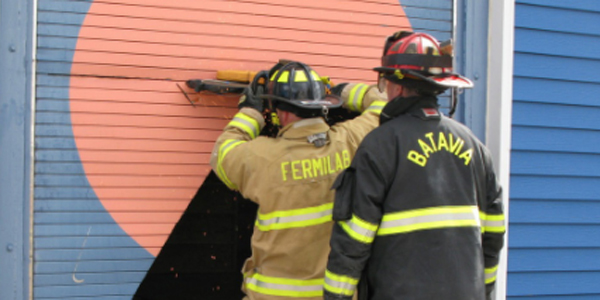
Here’s a closer look at the saws’ business end, the blades, that are best suited for fire and rescue work beyond venting the roof.

Robert Avsec
In addition to their role in ventilation, power saws have a long history of being an important piece of forcible-entry equipment for fire departments.
Beginning with circular power saws, and later with reciprocating saws, these tools provide firefighters and rescue technicians with the capability to breach a wide variety of materials from concrete to automobile metals.
The first fire service saws were modified versions of power saws used in the building trades industries. Subsequent generations of portable power saws have been designed specifically for fire and rescue operations.
Here’s a closer look at the saws’ business end, the blades, that are best suited for fire and rescue work beyond venting the roof.
Bi-metal reciprocating blades
First introduced in the 1960s, bi-metal reciprocating saw blades have long been used by the building trades as well as the fire services.
These blades work so well for rescue applications because of their rugged construction. Bi-metal saw blades have a high-speed steel cutting edge that is welded to a strong, flexible spring steel back.
Fire departments can dramatically improve the capabilities of their reciprocating saws by only using break-resistant, bi-metal blades specifically designed for the rugged use and abuse of fire and rescue applications.
Such super-heavy-duty blades, commonly known as demolition blades, are a vast improvement compared to saw blades used in the past. So much so, that they make the standard hardware-store variety saw blades obsolete.
DeWalt, Milwaukee and Lenox are just a few of the demolition blade manufacturers. Demolition blades have reduced tang breakage, a common problem with lightweight consumer-grade blades. These rescue-specific blades also bend rather than snap or break and minimize tooth chipping compared to standard blades.
While more expensive than a consumer-grade blade, the advantages and capabilities of these blades far outweigh their cost factor. Fire and rescue teams should not use anything but industrial-grade, bi-metal demolition reciprocating saw blades specifically designed for fire and rescue applications.
Circular blades
Fire Rescue Blades has a range of circular saw blades that are specifically designed for the demands of fire rescue work. Here’s a look at three of their offerings.
The Extractor-II rescue blade is a multipurpose diamond saw blade. The heart of the blade is a steel core with industrial cutting diamonds vacuum-brazed to the edge. Segments do not break or fly off as with traditional laser-welded diamond blades, making this blade literally bulletproof, the company says.
The Roof Ripper is a carbide-tip blade that features a heavy steel core. Chunks of carbide steel are welded to the core, making this blade extremely aggressive and well-suited for vertical ventilation for a wide variety of roof coverings.
Diamond Rescue blades are constructed of a solid steel core with laser-welded segments. The diamond crystals are bonded in a matrix forming the segments.
The segments are then laser-welded to the circumference (rim), providing improved performance characteristics. The blade is engineered to cut ferrous materials very fast with a high-speed gas saw.
Diamond Blade Dealer’s line of diamond blades and accessories includes one model specifically designed for fire and rescue operations.
Diamond-tipped rescue/demolition saw blades can cut through a variety of materials such as metal, chains, locks, iron fencing, rebar, steel, pipe, ductile iron, cast iron, copper, concrete, masonry, stone, stucco, wood, HDPE, PVC, plastic, metal, roofing and steel studs.
The newest generation of these blades are manufactured using a vacuum-brazed, single-layer technology that enables the blade to cut twice as fast as an abrasive blade and last up to 70 times longer, the company says.
Unifire’s vacuum-bonded diamond blade features diamond segments with grooves that allow the blade to better cut through softer materials like wood while keeping strength for cutting through harder materials like concrete, metal, reinforced concrete and ductile iron. Vacuum-bonded diamonds on the side of the blade help reduce binding.
The Unifire Special Ops circular saw blade cuts through brick, 5,000-plus psi concrete, ductile iron, cast iron, asphalt, metal, steel, rebar, reinforced concrete, stone and block. This blade has three different segment styles that assist with cutting, cleans debris from the cut area and protects from binding and warping.
Fire and rescue personnel encounter many different material cutting challenges as material design and manufacturing companies continue to develop newer, lighter and stronger materials, like carbon fiber alloys. It’s more important than ever before for rescuers personnel to know which type of saw blade can be most effective for a given construction or vehicle material.
Fire departments would be wise to develop a written job aide for each type of saw blade carried aboard their apparatus that clearly indicates those types of materials that a blade is most effective at cutting. Such a job aide should be laminated and kept close to the power saws and blades.